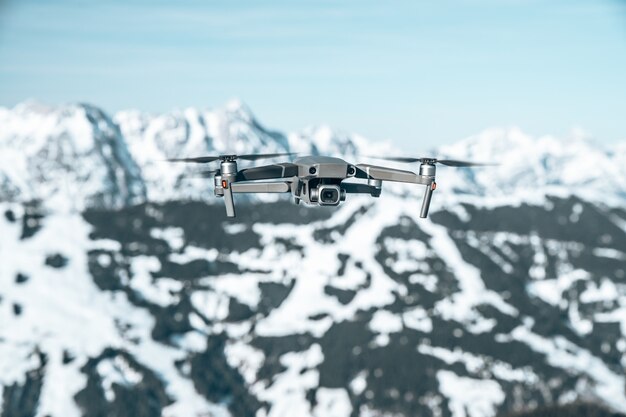
Sponsored article
The realm of drone detection technology is rapidly evolving, driven by the need to enhance security and manage the ever-growing presence of drones in our airspace. With increased drone activity, the challenge lies in developing sophisticated detection systems that can accurately identify and mitigate potential threats. This article delves into the technological strides being made, the hurdles yet to be overcome, and the significant implications for future security strategies. Join us as we explore how these innovations are transforming airspace protection.
The field of drone detection is witnessing remarkable technological advancements, with cutting-edge radar systems and AI algorithms at the forefront of this evolution. One of the standout innovations is the development of 4D radar systems, which offer comprehensive scanning capabilities and unmatched accuracy in detecting aerial threats. The MADDOS Radar, for example, utilizes an Active Electronically Scanned Array (AESA) S-Band antenna for full 360-degree coverage, making it a leading tool in identifying and tracking low signature targets. This new era of radar technology is complemented by advanced AI algorithms, capable of processing vast amounts of data to enhance detection accuracy and reduce false positives.
These advancements ensure that radar systems can operate efficiently in dynamic environments and support multiple missions simultaneously. Key improvements in drone detection technology include:
Such capabilities position systems like the 4D radar as quintessential solutions in modern defense. With a focus on precision and efficiency, these innovations are redefining how we secure airspace against both conventional and unconventional threats.
Detecting and accurately identifying drones in the sky poses significant challenges, particularly when considering the diverse range of sizes and capabilities these unmanned aerial vehicles possess. One of the primary hurdles in drone identification is distinguishing between drones and other small flying objects, such as birds or balloons. This can lead to the issue of false positives, where harmless entities are mistakenly flagged as security threats. Such inaccuracies can result in wasted resources and may lead to unnecessary panic, complicating the management of airspace safety. Furthermore, rapidly evolving drone technology continuously introduces new variables that detection systems must accommodate, creating an ongoing need for adaptive solutions.
These challenges necessitate advanced detection systems that can reliably differentiate drones in the crowded skies. However, current technologies face persistent obstacles, including:
Addressing these issues is crucial for enhancing airspace safety and ensuring robust security measures are in place to counter potential threats. As the drone industry continues to expand, the development of efficient and precise drone identification technologies remains a top priority for airspace management authorities.
As the world increasingly relies on airspace for commercial and personal applications, emerging drone detection technologies significantly influence future security strategies. These technologies offer unprecedented capabilities in identifying unauthorized drones, thereby enhancing infrastructure protection for sensitive and critical areas. The integration of advanced sensors and AI-driven analytics enables security professionals to detect and track drone activities with greater accuracy, facilitating proactive measures to neutralize potential threats. The refinement of these technologies not only bolsters existing security frameworks but also prompts the development of more robust drone mitigation strategies. By addressing the complexities of airspace monitoring and enforcement, new drone detection solutions are set to be pivotal in shaping how we secure our skies.
Additionally, the evolving landscape of drone technology compels regulatory bodies to develop comprehensive regulatory measures that synchronize with the capabilities of detection systems. This ensures a balanced approach, where innovation thrives alongside stringent safety protocols. Regulatory measures play a crucial role in standardizing practices for both detection and mitigation, fostering an environment where technological advancements and security demands coexist. As detection technologies continue to advance, they will inform future investments and strategies, leading to a more secure and resilient infrastructure protection framework. This collaborative evolution between technology and regulation will ultimately establish a secure airspace, mitigating risks while supporting legitimate drone activity.